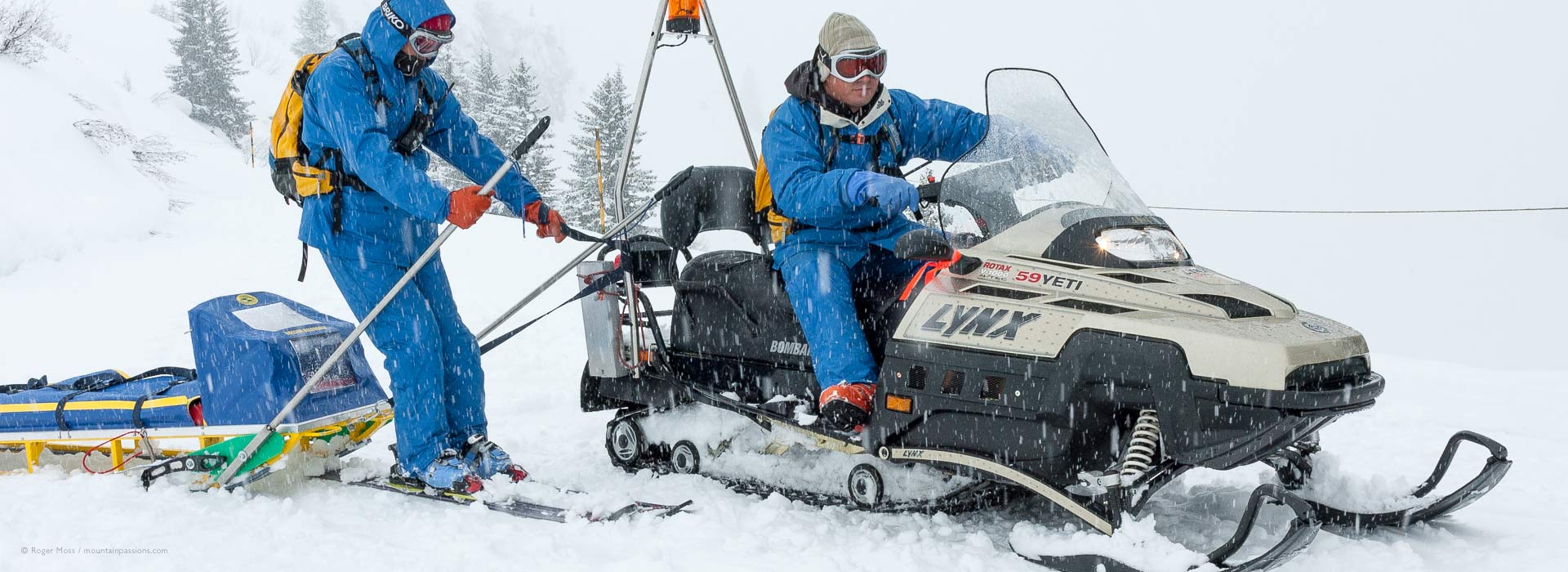
Behind the Scenes on the Piste
Keeping the slopes safe
A safe and enjoyable skiing experience still relies on the human touch, as I discovered in the amiable company of the pisteurs of the Grand Massif ski domaine in Haute-Savoie. While you’re still barely awake teams of accomplished skiers are out on their daily tours of inspection, checking every piste, replacing any safety nets or signage displaced by the previous night’s gales and blizzards, and checking for any other hazards. Their job is to find (and rectify) them before you do.
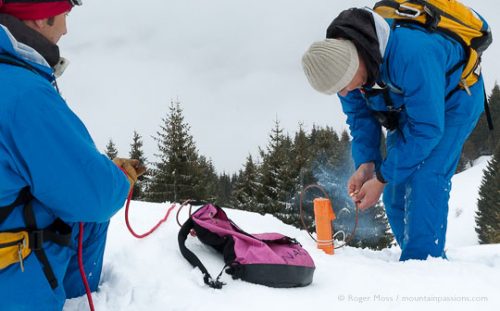
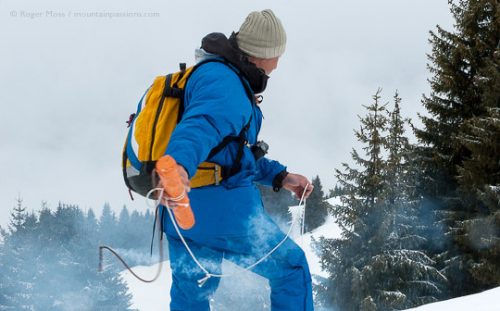
Avalanche control…
Avalanches strike fear into the heart of even the most experienced skiers, yet the zones at greatest risk of letting go are often barely-visible most mountain users. Pinpointing problems hidden beneath fresh, often deep overnight accumulations requires both skill and nerve, as preparation for the process of triggering controlled avalanches safely out of harm’s way before the real thing can occur. Habitual danger points are often equipped with remotely-triggered gas-fuelled Gazex ® cannon, which resemble giant drainpipes. They’re very efficient and have become a familiar sight on the mountainsides above many ski resorts, where they have largely replaced the older cable systems (which from a distance look like strangely remote drag-lifts) whose purpose was to transport and drop more conventional explosive charges. Between them, these devices do a pretty good job of dealing with know danger spots.
However, the fact that snow-bearing weather fronts can take you by surprise and blow in from virtually any direction means that it’s similarly impossible to predict precisely where unstable accumulations will build up. Finding and dealing with them is the job of specially trained avalanche control teams, who are hard at work on the mountain long before most skiers are up and around.
The time-honoured method of edging cautiously onto potentially-unstable areas and probing the fresh snow to determine the condition and stability of the various layers beneath it is still an uncomfortable fact of life for the teams. If a problem is detected then the teams will have no option but to remove the risk to skiers by means of a ‘contolled avalanche’ triggered by high-explosive charges. Yes, we’re talking sticks of dynamite.
It will come as no surprise that apart from quarrymen and military personnel, the security teams are the only people licensed by law to handle explosives. Unlike their counterparts, however, the teams still rely on conventional lit fuses; with so much electrical equipment around on the mountains (not to mention the ever-present risk of a sudden lightning strike) using electric cabling to trigger dynamite is simply not an option. That said, it’s still far from risk-free. If a thrown charge somehow fails to ignite, you obviously can’t just go and take a quick look to find out why. That’s why in case of a failed attempt the teams have a minimum wait time of 30min. Even so, it’s a chilling thought that one charge is on record as having detonated after 27min.
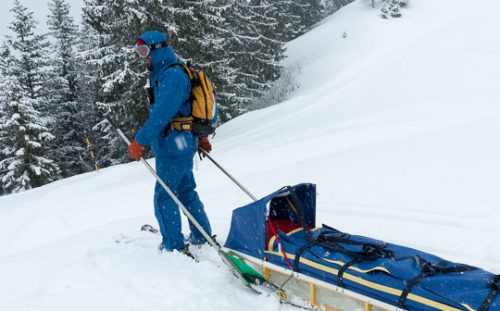
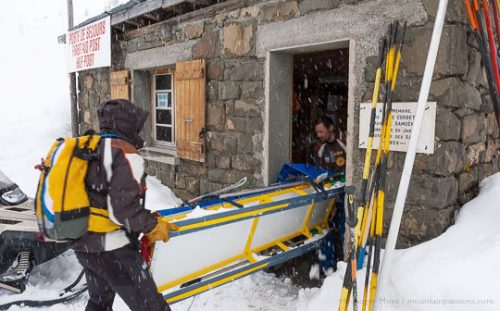
Time for a break…
Once the teams are satisfied that all potential avalanche sites have been made safe then it’s the turn of the pisteurs to fan out around the mountain and ski every single piste. During their travels they’ll be identifying and taking the necessary action to deal with any possible risk factors, such as replacing security netting or warning signage toppled by overnight storms, re-planting fallen piste-marker poles, etc. Once that’s completed each piste is signed-off as safe and the lifts can open for recreational skiers.
After their early-morning skiing experience the pisteurs remain on call for other duties such as emergency recoveries of anyone unfortunate enough to have a bad enough fall to require medical treatment. Once a call goes out then the steel-thighed teams are soon on scene to transport the patient swiftly but safely down the mountain, which can mean skiing with a heavy stretcher sled or, if it’s more than a simple descent, hitching it to a snowmobile.
When the lifts close at the end of the day and the mountain falls silent, another meticulous inspection patrol begins all over again. As soon as the last skiers have begun their final descents the pisteurs start to fan out behind them, re-skiing every piste to check for stragglers or anyone who might be in difficulty. At times like these the total silence which descends on the mountain is a great aid to concentration, and you have to say that when visibility and snow conditions are good, this aspect of their work is something the teams really enjoy. As before, every single run is signed off by the pisteur responsible, ready for the piste-groomers to begin their own vital but much more more solitary overnight work.
